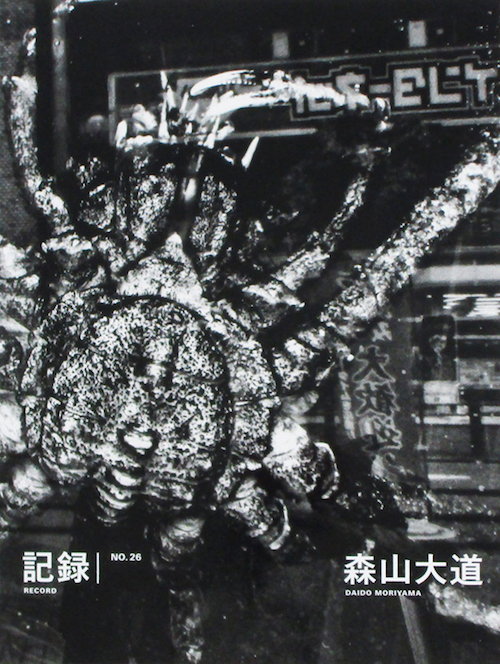Recherche
Daido Moriyama
Record n°26
278 x 220 mm
softcover, 90 pages, text by Daido Moriyama in Japanese & English
signed
Record is the personal magazine which Daido Moriyama first self-published in 1972-1973, intended as monthlies, until the rebirth of the project in 2006. Over the years, Record has become the artist's personal diary and notebook. Or, as he likes to put it, his 'lifeline' that runs underneath the numerous projects that punctuate his existence.
"Most of the photographs featured in this 26th volume of "Record" were taken in the streets of Ikebukuro and adjacent areas.
It is more than ten years ago that I moved into a flat in an old apartment building in what is now Nishi (West) Ikebukuro. Up to that point, I?d been devoting myself first and foremost to the Shinjuku neighborhood, so I had little connection to Ikebukuro. I rarely ever went there even during the half year that I once spent in Shinamachi, one stop from Ikebukuro station. That?s why my idea of Ikebukuro at the time was defined by memories of the Nishiguchi red-light district at night, including getting caught hiding in the shadows of a car park to shoot girls hanging around in a ?nude studio?, and being chased all across town by the guys running the place back when I was in my twenties; listening to a traveling guitar player while having a couple of drinks at a seedy watering hole in the Jinsei Yokocho area that no longer exists; and being dragged by (Nobuyoshi) Araki into a photo boot did some hot (?) kissing after an excessive booze-cruise around hip café-bars with Araki and the folks of "Shashin Jidai" magazine in the mid-80s.
Even after moving into my current flat some ten years ago, the territory of my daily activities remained mostly Shinjuku, so all I had to do with lkebukuro was shopping at Tobu Department Store, Bic Camera, or the Junkudo bookstore. However, during a walk in the spring of 2013 I happened to take one particular picture that I really liked, and that somehow sparked my interest. Or better perhaps, that belatedly made me aware that it would be a waste if I didn't go out shooting on my home turf so to speak. I eventually spent more than a year on the prowl with my camera in the lkebukuro neighborhood.
As a result, I realized that although Shinjuku and Ikebukuro are both major terminal stations, the air in the streets is different. The impression I?m getting from the people - their body temperature, or their constitution if you will- is just different. After all, I found out that the temperature in the streets ok Ikebukuro again suit that of my own body. In the streets of Ikebukuro again suit that of my own body. In a nutshell, ?lovable Ikebukuro? is now I would describe the feelings I am harboring toward Ikebukuro these days."
Daido Moriyama, excerpt from the afterword of Record n°26
Artist's page
